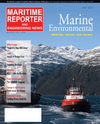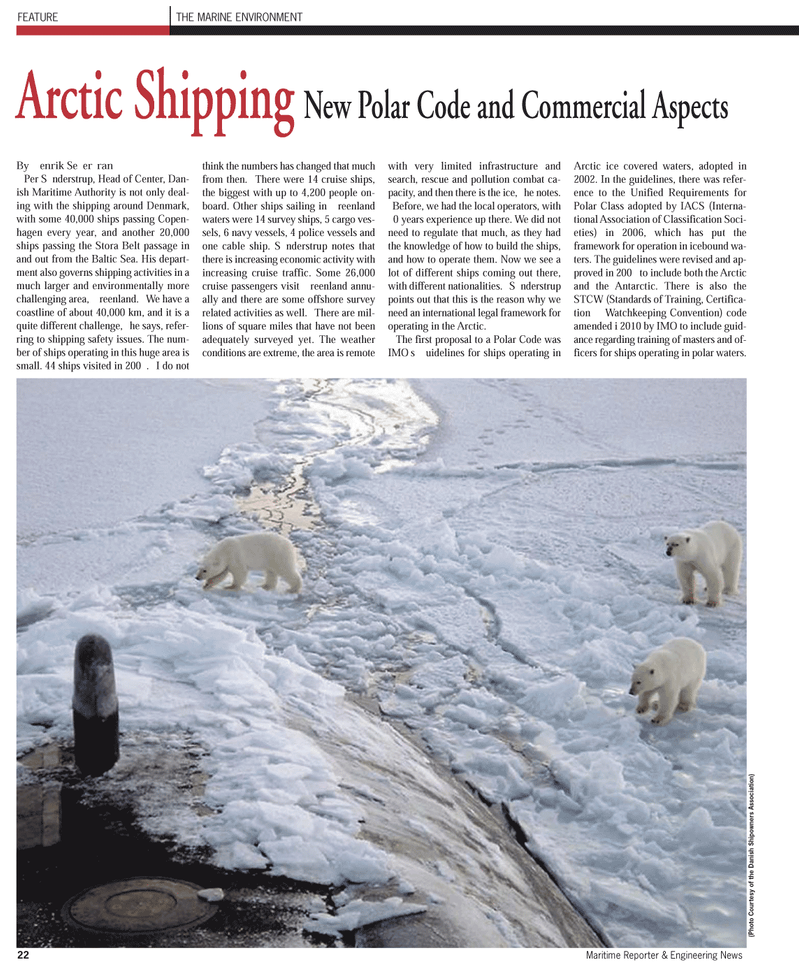
Page 22: of Maritime Reporter Magazine (July 2011)
The Green Ship Edition
Read this page in Pdf, Flash or Html5 edition of July 2011 Maritime Reporter Magazine
By enrik Seerran Per Snderstrup, Head of Center, Dan- ish Maritime Authority is not only deal- ing with the shipping around Denmark,with some 40,000 ships passing Copen-hagen every year, and another 20,000 ships passing the Stora Belt passage inand out from the Baltic Sea. His depart-ment also governs shipping activities in a much larger and environmentally more challenging area, reenland. We have a coastline of about 40,000 km, and it is aquite different challenge, he says, refer- ring to shipping safety issues. The num- ber of ships operating in this huge area issmall. 44 ships visited in 200. I do not think the numbers has changed that muchfrom then. There were 14 cruise ships, the biggest with up to 4,200 people on-board. Other ships sailing in reenland waters were 14 survey ships, 5 cargo ves- sels, 6 navy vessels, 4 police vessels and one cable ship. Snderstrup notes that there is increasing economic activity with increasing cruise traffic. Some 26,000 cruise passengers visit reenland annu- ally and there are some offshore survey related activities as well. There are mil- lions of square miles that have not been adequately surveyed yet. The weather conditions are extreme, the area is remote with very limited infrastructure and search, rescue and pollution combat ca-pacity, and then there is the ice, he notes. Before, we had the local operators, with0 years experience up there. We did not need to regulate that much, as they had the knowledge of how to build the ships, and how to operate them. Now we see a lot of different ships coming out there, with different nationalities. Snderstrup points out that this is the reason why weneed an international legal framework for operating in the Arctic. The first proposal to a Polar Code was IMOs uidelines for ships operating in Arctic ice covered waters, adopted in 2002. In the guidelines, there was refer- ence to the Unified Requirements for Polar Class adopted by IACS (Interna- tional Association of Classification Soci- eties) in 2006, which has put theframework for operation in icebound wa- ters. The guidelines were revised and ap- proved in 200 to include both the Arctic and the Antarctic. There is also the STCW (Standards of Training, Certifica- tion Watchkeeping Convention) code amended i 2010 by IMO to include guid-ance regarding training of masters and of- ficers for ships operating in polar waters. THE MARINE ENVIRONMENTFEATURE Arctic Shipping New Polar Code and Commercial Aspects 22Maritime Reporter & Engineering News (Photo Courtesy of the Danish Shipowners Association)

 21
21

 23
23
